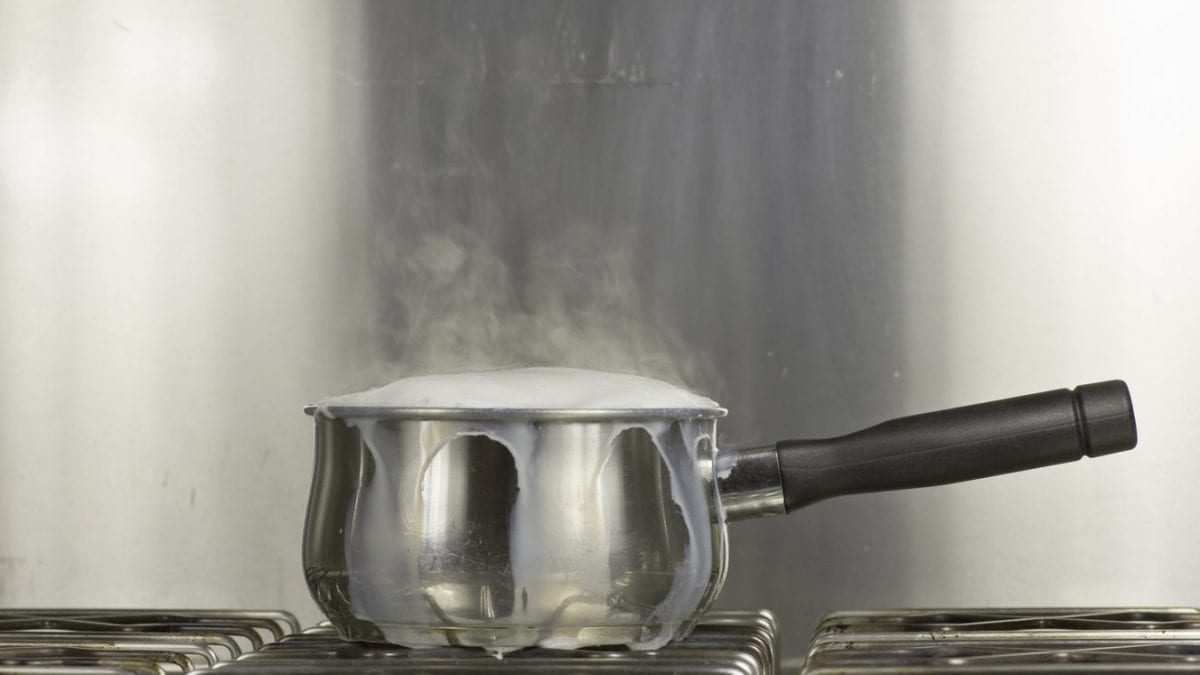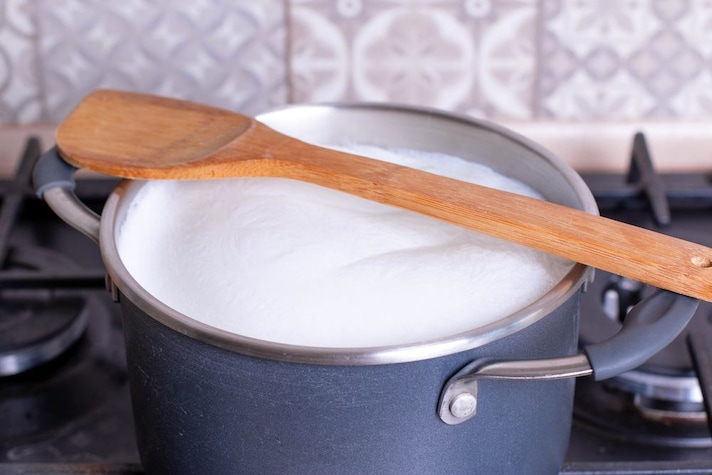
Sometimes all you need to start your day off right is a big, steaming mug of hot milk, whether you drink it plain, sweetened, or with cocoa added. But we're sure it's happened to you too: when you leave it to heat up on the stove, a thin white film has appeared.
What is it, why does it form? It is not a mystery and not even something that will compromise your milk: it is simply the result of some chemical and physical processes that have casein as the protagonist. Here is everything you need to know about it and some simple advice to avoid the annoying membrane from forming.
What is It And Why Does It Form Over Milk?
The formation of the skin on milk is actually a very simple scientific process. When milk is heated too much, and therefore reaches a temperature between 149°F/65°C and 176°F/80°C, the casein molecules inside it change their structure.
More or less when it reaches 176-194°F/80-90°C these molecules form a real dimensional network on the surface of the milk, where air, small quantities of fat and minerals remain trapped. The result is the formation of the thin membrane that we see appearing on milk which is absolutely not harmful to humans.
This happens because, at that temperature, the water contained in the milk evaporates and thus promotes a real coagulation process of the casein, even if only on the surface. The formation of the skin precedes boiling by a few moments: milk, in fact, boils at exactly 194°F/90°C.

The culprit is therefore casein, present in all types of animal milk. The formation of the surface film will always occur regardless of the type of milk you heat, only its thickness and consistency will change depending on the quantity of fat component present in the milk, which the higher it is, the more it will favor coagulation.
How to Avoid or Eliminate Milk's Skin
If a skin forms on the milk, don't worry: you can take care of it easily. You just have to wait for the milk to boil because in this way the film will break on its own, pushed by the steam that rises from the bottom and that breaks the bond between the casein molecules. Or, alternatively, if you don't like boiled milk, be sure to stir it every now and then while it heats up and pay attention to the temperature: if it doesn't get too hot, the rennet process won't activate and therefore you won't have the annoying film.
;Resize,width=767;)
